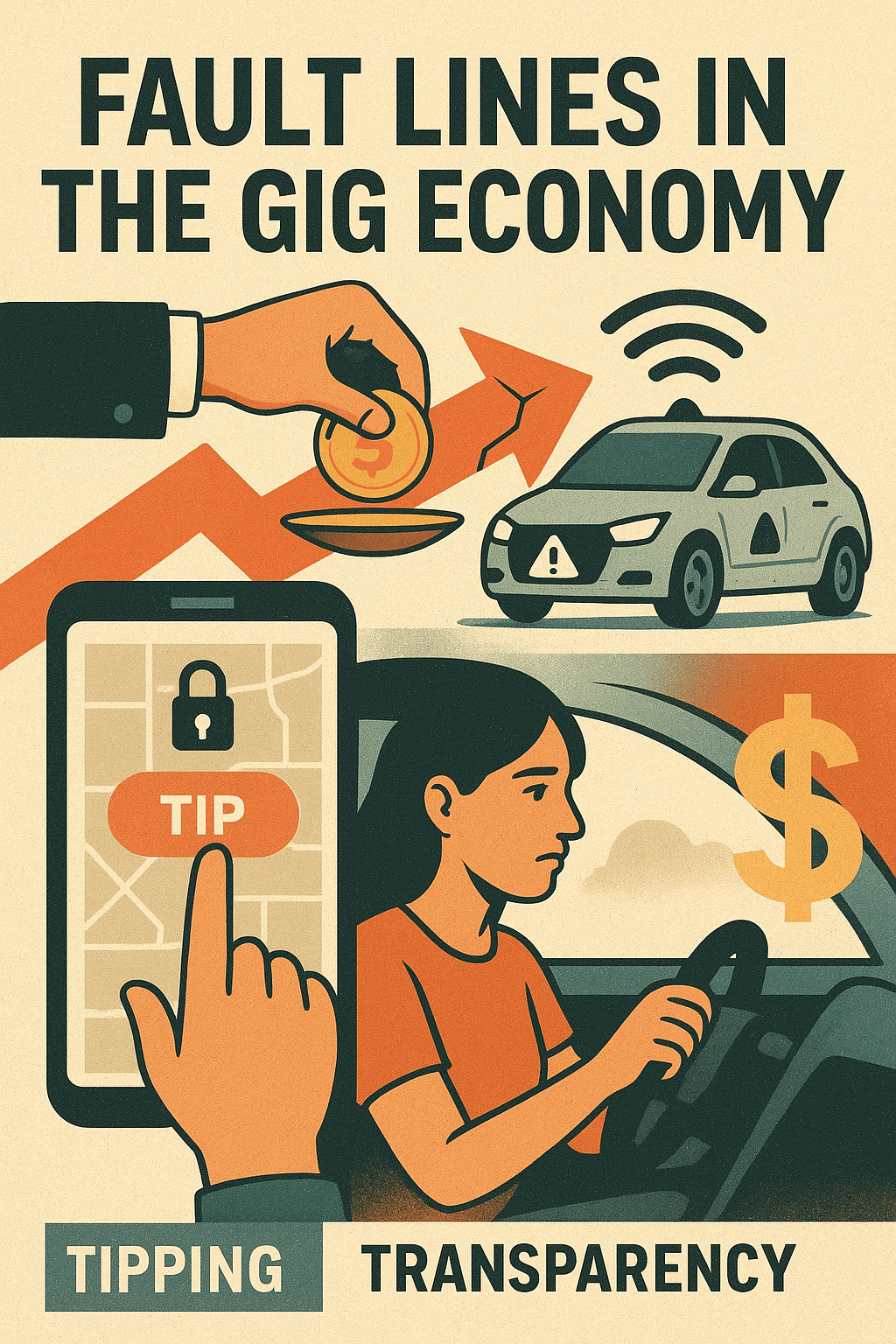The gig economy is moving fast, and the fault lines are easy to see: tipping, transparency, automation, and the reality of driver pay. We kicked off by talking community—Patreon, live streams, and a Telegram group where drivers swap real-time tips and vent without feeling alone. That context matters, because the news this week landed squarely on driver livelihoods. Lyft tested a banner that showed drivers how often a rider tips and whether they’re usually ready at pickup. For drivers, that’s gold: another data point to decide which requests to accept. For riders, it felt like a scarlet letter. The result was predictable—viral backlash and a quick rollback. The episode framed the core tension: drivers need transparency to earn; platforms worry about PR and rider churn.
We unpacked tipping culture and its generational divide. Survey data shows many Americans think tipping has spun out of control, yet a large share still tips drivers—though Gen Z lags. That tracks with on-the-ground stories at ballparks and in rideshare. The tricky part is context: restaurant servers don’t bring their own tools; drivers do. Personal vehicles, insurance, fuel, tires, and time all come from the driver side, meaning base pay without tips often fails to cover costs, especially on absurd pings like $5 for 21 miles over nearly 40 minutes. Transparency could help filter out bad requests, but any hint that a rider is labeled “non-tipper” gets framed as shaming. It raises a bigger question: should apps build for sustainable driver earnings or keep riders comfortable enough to keep booking?
Automation loomed large: Waymo fleets, pranksters calling 50 cars to a dead-end, and a viral clip of a Waymo making a sharp lane change. We explored whether the maneuver was aggressive code or a quick calculation to avoid blocking a turn. More broadly, we asked how autonomy should behave in human swarms—timid cars get boxed out; aggressive ones spark outrage. Then came a different kind of robot: Miami’s pilot of an AI-enabled police SUV that patrols, scans plates, and sends alerts. It’s pitched as a force multiplier, not a replacement, but it triggers familiar privacy debates. Still, compared to fixed camera networks, a mobile, visible deterrent may free officers to focus on human calls while catching patterns software detects better than a tired patrol.
Not all tech makes work easier, though. A delivery video showed a weightless envelope caught by wind; another showed a new Amazon driver collapsing a stone bench, with the homeowner rushing to help. Those moments remind us there are people behind the pings, trying to hit quotas while staying human. Heat maps and surge visuals can help, but drivers still juggle safety, speed, and customer expectations. The episode weighed a more radical future: Lyft’s partnership with Tensor on a personal robocar that owners can deploy on the platform, maintained by a fleet service. It’s a vision where your car doesn’t sit idle; it earns while you work. The snags are obvious—costs, regulations, liability, and real net income after cleaning, charging, and wear. But the direction is clear: more automation, more data, and new ways to monetize mobility.
We closed on the real takeaway: drivers need better tools, clearer pay, and community to stay sane. Riders need simple, fair expectations. Platforms need to stop testing features in ways that pit both sides against each other. If autonomy is coming, it should complement workers rather than erase them overnight. Until then, transparency on offers, honest ETAs, and fewer traps like 20-mile $5 runs would do more for trust than any shiny pilot. The gig economy is a living system; when one piece gets ignored—driver earnings, rider clarity, or platform policies—the whole thing groans. The fixes aren’t magic, but they’re not mysterious: pay fairly, show the numbers, and let adults choose the work that makes sense.

